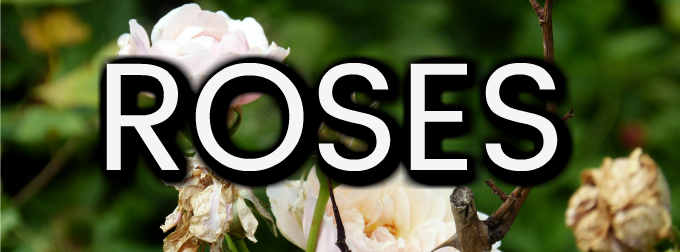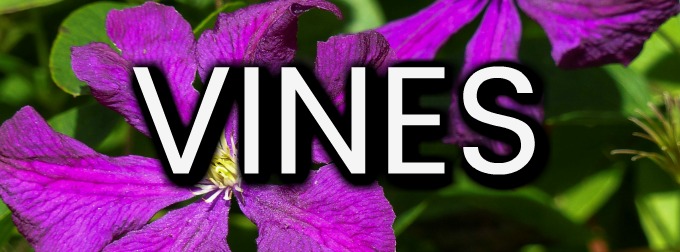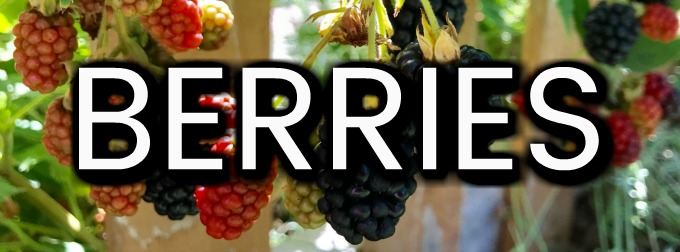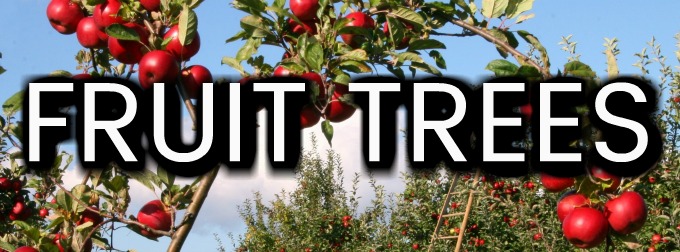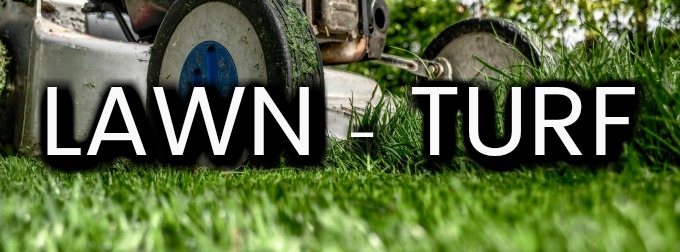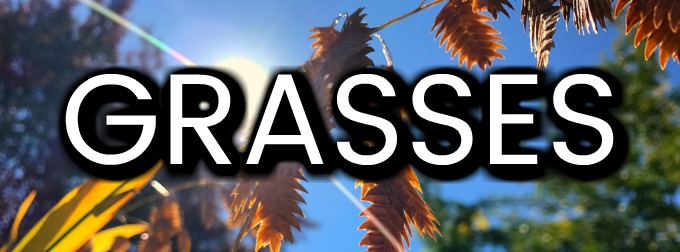Time to do your fall pruning in your Utah garden along the Wasatch Front. Pruning your garden for winter is fairly simple. Follow two main basic pruning rules and then follow guidelines for various plants listed.
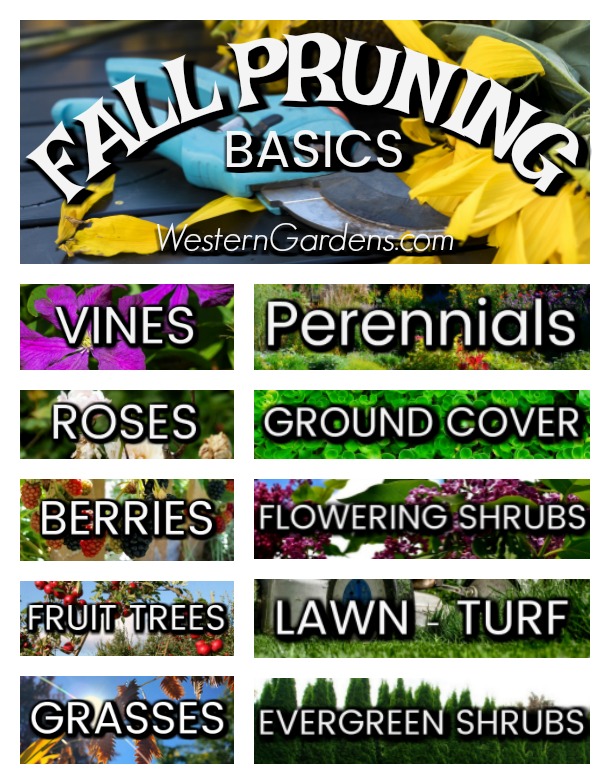
GENERAL Pruning Rules to Remember:
Rule #1 – Don’t prune plants until they are finished blooming.
Rule #2 – Prune dead or broken branches at any time of the season.
FALL Pruning Guidelines:
Fall Pruning of Flowering Shrubs
To keep with Rule #1, remember not to prune fall blooming shrubs until they are done blooming. Examples of fall blooming shrubs include Rose of Sharon, Hydrangeas, etc. Spring blooming shrubs (forsythia, spirea, lilac, etc) should be pruned in the spring or summer after they are done blooming. Often, these shrubs bloom on new growth, so prune them early in the season to get some good growth for the next year’s blooms.
Before you get started pruning your flowering shrub, keep in mind to retain and enhance the shrub’s naturally graceful habit. Take care not to cut the shrub into a boxy or unnatural shape (unless you want to sacrifice flowers and make a hedge). Remove dead and crossing branches. Cut ¼ of the oldest canes to the ground. This gives the plant renewed strength, letting light and air circulation into the center of the plant and provides growing space for new flowering stems.
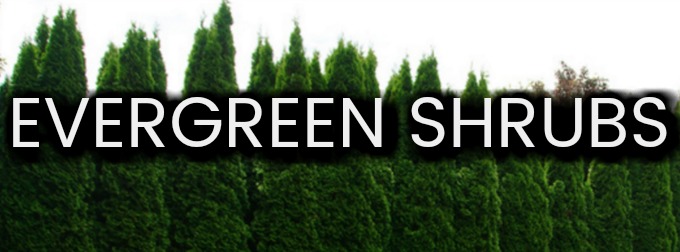
Fall Pruning of Upright Evergreen Shrubs
Lightly prune to shape. Shrubs like Arborvitae may need wrapping or tying with twine to keep the snow from breaking off the branches.
Fall Pruning of Rose Bushes
Pruning depth depends on the type of rose. If a hybrid tea or a floribunda type, prune down to 24” above ground. Otherwise, prune to shape the bush. Prune out dead and broken branches. May mulch around the base of the bush in case of unexpected sub-zero winter temperatures. In the spring, if there has been winter damage, you will be able to prune off the winter-kill. Click here for a good article on how to prune your roses.
Fall Pruning of Vines
Pruning depends all upon the type of vine. Some clematis need pruning, other clematis do not. Follow the directions on the plant tag from a reputable local garden center, or ask the experts at the local nursery.
Fall Pruning of Berry Plants
Again, pruning requirements drastically vary depending on type of berry and cultivar. Ever-bearing plants require different pruning techniques than main crop berries. And even then there are different needs. You don’t want to trim back too far in the fall if you need to leave that newer growth for next year’s berries. Again, consult the expert gardeners at your reputable garden center. Be sure to know what variety of berry you have.
Fall Pruning of Fruit Trees
Do not prune fruit trees until winter when they are dormant, i.e. leaves have fallen and temperatures are in 30’s & 40’s. In northern Utah, we recommend pruning during January and February. Follow proper tree pruning techniques in the winter. Winter Pruning video. Remember that at any time, you can prune away dead or broken branches.
Fall Mowing “Pruning” of Lawn/Turf
Mowing your lawn is actually a type of “pruning”. Your last mowing of the season should be shorter than during the summer months when you want the shade of the blades to help retain moisture in the soil and more green for healthier roots. When you are ready to put your lawnmower away, set your lawn mower to 1½” setting and give your lawn a good pruning! WARNING: Don’t be overly ambitious and “scalp” the lawn. A nice short cut is desired, but you don’t want to injure the base of the plant.
Additional Fall Lawn Note: Now is a time to spread your fall fertilizer. If you have had issues with fungus, now is the time to apply a fungicide treatment. Also, weed control is still viable when daily high temperatures are higher than 55-60 degrees. Weeds love the forgotten fall lawn.

Fall Pruning of Perennials
Be sure to remember Rules #1 and #2 above. Not pruning until the plant finishes blooming also applies to dividing and transplanting in the fall. Don’t transplant until the plant is done blooming. This means that your fall bloomers like Autumn Joy Sedum, chrysanthemums, etc., need to finish blooming before you divide and transplant or prune. Be patient! You have plenty of other pruning and garden work to do. These are the last ones to prune before the beds are done for the winter.
Two Additional General Fall Pruning Rules for Most Perennials:
- Prune when the plants begin to die back, leaving their greenery to continue feeding the roots as long as possible.
- Cut them down to 3-4 inches above the soil. This is because most perennials die down to the ground in the winter. Leaving 3 inches will mark the plants during winter. Also in the spring the 3-4 inches is low enough you won’t need to go back and prune as the plant emerges.
EXCEPTIONS to Pruning Perennial Rules: Woody perennials like lavender need only light pruning to shape and evergreen perennials like candytuft should also only be lightly pruned. If you question what to prune or how much, follow the guidance from your master gardener at the independent garden center like Western Gardens. We would love to help you have a successful garden.
Fall Pruning of Ground Covers –
Simply trim lightly.
Fall Pruning of Ornamental Grasses
If you enjoy the silhouette of your grasses, leave them to admire throughout late fall. Later trim to 6-8 inches above ground.
Fall Pruning Questions:
If you have any questions about fall pruning for winter, please feel free to stop by our Western Garden Centers and visit with one of our expert gardeners. We’ll be happy to answer any of your questions.
Fall Reminder:
While you are pruning and cleaning up, breathe deep the fresh autumn crisp air and admire the changes taking place in your garden.
What fall pruning do you enjoy doing in your yard?
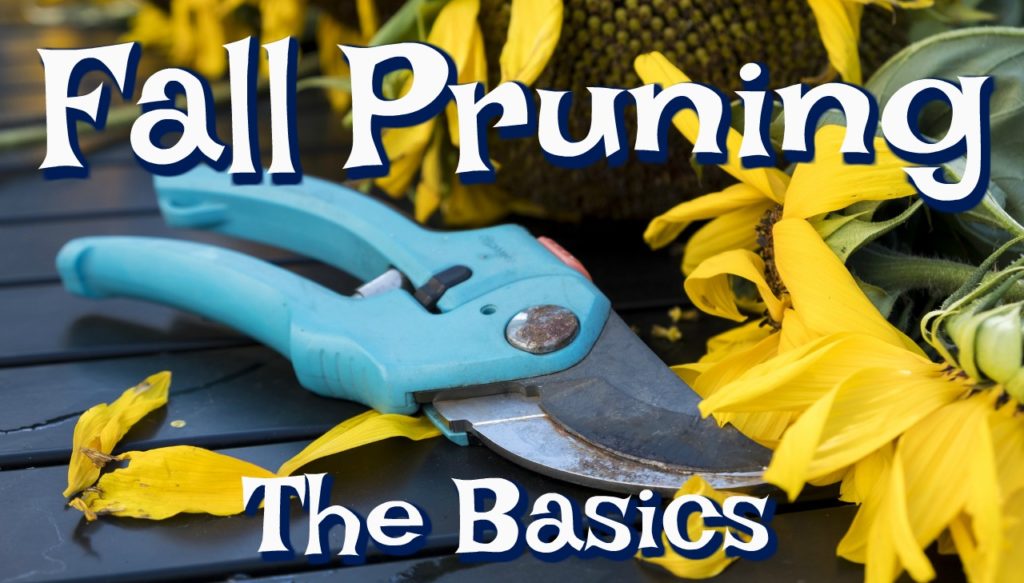
Photo credit: Pixabay
Wendy Pettit
Latest posts by Wendy Pettit (see all)
- Save Water, Save Money with Turf Training in 2022 - April 19, 2022
- utah spring jobs at Western Gardens - January 30, 2021
- Best Plants for Seniors – Beginner Gardening - June 29, 2020

